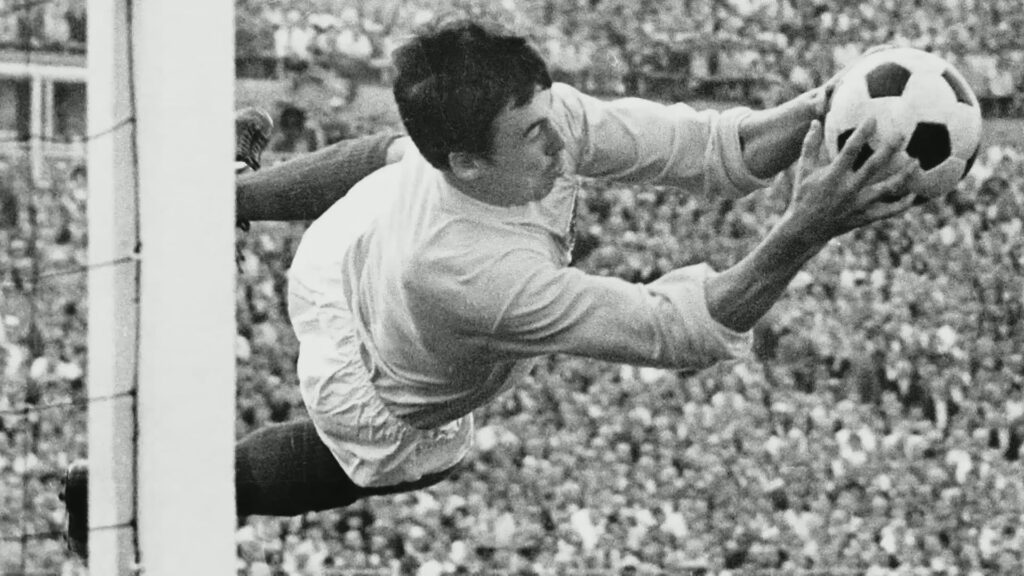Gordon Banks is often remembered as England’s greatest goalkeeper and one of the finest shot-stoppers the game has ever seen. Best known for his role in England’s 1966 World Cup triumph and his legendary “Save of the Century” against Pelé in 1970, Banks combined agility, positioning, and reliability in a way that made him a benchmark for goalkeepers worldwide. Here’s why he stands out:

🧤 1. Career & Achievements
- World Cup Champion (1966) — the only English goalkeeper to lift the trophy.
- FIFA Save of the Century (1970) against Brazil’s Pelé, still considered one of the greatest saves in football history.
- FIFA Goalkeeper of the Year six times (1966–71).
- 73 caps for England in an era of heavy competition.
- Long, successful club career with Leicester City and Stoke City, winning the League Cup with both.
⚡ 2. Style of Play That Made Him Stand Out
Banks was not physically huge (about 6’1”), but his skill set was world-class:
- Shot-Stopping Genius
His reflexes were lightning fast, especially in close-range situations. The famous Pelé save—diving low to his right to claw the ball over the bar—epitomized his ability to react instantly. - Positioning Mastery
Banks rarely looked out of place. His anticipation meant he often made saves look easier than they were. - Safe & Consistent
Much like Dino Zoff, Banks was not a flamboyant keeper; he was reliable, rarely making costly errors. - Bravery
He wasn’t afraid to dive at strikers’ feet or throw himself into dangerous situations to prevent goals.
🔬 3. Innovations & Influence
While Banks wasn’t a radical innovator like Lev Yashin or Manuel Neuer, he set new standards for the position:
- Technical Goalkeeping Model
Banks helped shape modern English goalkeeping, focusing on clean handling, reflexes, and positioning instead of pure athleticism or size. - Professional Training Approach
He emphasized discipline, repetition, and fitness, inspiring a more systematic approach to goalkeeper training in England. - The “Reflex Keeper” Ideal
His ability to produce miracle saves underlined the importance of reflexes and agility, influencing later English keepers like Peter Shilton and David Seaman.

🌍 4. Cultural & Historical Impact
- National Hero: A key part of England’s only World Cup triumph in 1966, securing legendary status.
- The Save Against Pelé: Immortalized in football history, it became symbolic of the goalkeeper’s art. Even Pelé admitted he thought it was a goal.
- Resilience: His career was cut short after losing an eye in a car accident (1972), yet his legacy was already secured.
- Revered worldwide as a gentleman of the game, combining skill with humility.
✅ In short: Gordon Banks is one of the greatest because he was the complete shot-stopper of his era—reliable, agile, and capable of miracles when it mattered most. He didn’t reinvent goalkeeping like Yashin or Neuer, but he set a gold standard for technical excellence and composure that inspired generations of English and international goalkeepers.
Goalkeeper Glove Care
Extend your gloves’ lifespan and restore grip with KEEPER BALM. Trusted by goalkeepers worldwide.
It keeps goalkeeper gloves gripping like new, forever.